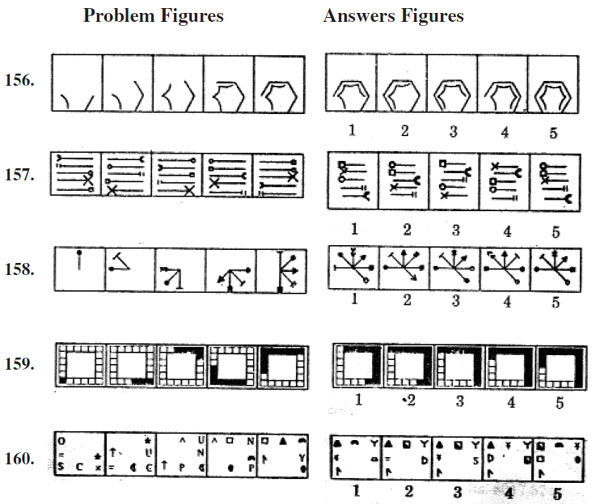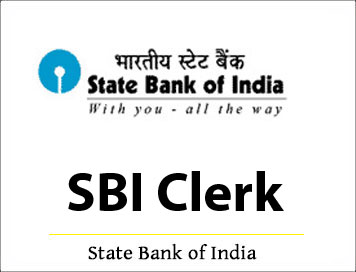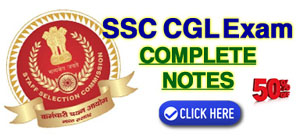NEW! E-BOOKS (PDF)
NEW! SBI PO Study Notes | IBPS PO Exam
(Paper) SBI Clerk Exam Paper - 2008 (Reasoning Ability)
(Paper) SBI Clerk Exam Paper - 2008
:: REASONING ABILITY ::
121. Four of the following five are alike in a certain way and so form a group. Which is the one that does not belong to that group?
1) Bat
2) Spider
3) Mosquito
4) Butterfly
5) Cockroach
122. Akshay is 16th from the left end in the row of boys and Vijay is 18th from the right end. Avinash is 11th from Akshay towards the right end and 3rd from Vijay towards the right end. How many boys are there in the row?
1) Data inadequate
2) 42
3) 40
4) 48
5) None of these
123. How many such pairs of letters are there in the word ''CHILDREN" each of which has as many letters between them in the word as there are between them in the English alphabet?
1) 3
2) 5
3) 4
4) 2
5) None of these
124. Pointing to the lady in the Photograph, Mrinalini said, ''Her son's father is the only son-in-law of my mother". How is Mrinalini related to the lady?
1) Sister
2) Mother
3) Cousin
4) Aunt
5) None of these
125. In a certain code 'MOTHER' is written as OMHURF. How will 'ANSWER' be written in that code?
1) NBWRRF
2) MAVSPE
3) NBWTRD
4) NBXSSE
5) None of these
Directions (126 - 130): Study the following information carefully and answer the questions given below:
B, M, T, R, K, H and D are travelling in a train compartment with II-tier sleeper berth. Each of them has a different profession of Engineer, Doctor, Architect, Pharmacist, Lawyer, Journalist and Pathologist. They occupied two lower berths, three middle berths and two upper berths. B, the Engineer is not on the upper berth. The Architect is the only other person who occupies the same type of berth as that of B. M and H are not on the middle berth and their professions are Pathologist and Lawyer respectively. T is a Pharmacist, D is neither a Journalist nor an Architect. K occupies same type of berth as that of the Doctor.
126. What is D's profession?
1) Doctor
2) Engineer
3) Lawyer
4) Pharmacist
5) Data inadequate
127. Which of the following group occupies middle berth?
1) DKR
2) DHT
3) HKT
4) DKT
5) None of these
128. Which of the following combinations of person-berth-profession is correct?
1) R-Lower-Journalist
2) R-Lower-Architect
3) D-Upper-Doctor
4) K-Upper-Lawyer
5) All correct
129. Which of the following pairs occupy the lower berth?
1) BD
2) BK
3) BT
4) Data inadequate
5) None of these
130. Who is the Architect?
1) D
2) H
3) R
4) Data inadequate
5) None of these
DOWNLOAD SBI CLERK Question Papers PDF
DOWNLOAD SBI PO Question Papers PDF
DOWNLOAD MORE BANK EXAMS E-BOOKS
Buy Printed Study Material for SBI Clerk Exam
131. If it is possible to make a meaningful word with the third, the fifth, the seventh and the tenth letters of the word 'OUTRAGEOUS', which of the following will be the second letter of that word? It more than one such word can be formed, give 'X' as the answer and if no such word can be formed, give 'Y' as the answer.
1) E
2) A
3) S
4) Y
5)X
132. The positions of the first and the second digits in the number 7986032451 are interchanged. Similarly the positions of the third and fourth digits are interchanged and so on. Which of the following will be the fifth digit from the right end after the rearrangement?
1) 3
2) 6
3) 4
4) 0
5) None of these

134. If the letters of the word ''PRINCE" rearranged as they appear in the English alphabet, the position of how many letters will remain unchanged after the rearrangement?
1) None
2) One
3) Two
4) Three
5) None of these
135. If 'A ★ B' means A is father of B', 'A × B' means 'A is mother of B' and 'A # B' means 'A is husband of B' then which of the following means 'P is grandson of Q'?
1) Q # R × S ★ P
2) Q ★ N × P # R
3) Q ★ L # N × P
4) P # N × M ★ Q
5) None of these
Directions (136 - 140): In the following questions, the symbols , $, %, @ and # are used with the following meaning as illustrated below:
'P @ Q' means 'P is neither greater than nor equal to Q'
'P $ Q' means 'P is not smaller than Q'
'P # Q' means 'P is neither smaller than nor greater than Q'.
'P Q' means 'P is not greater than Q'
'P % Q' means 'P is neither smaller than nor equal to Q'.
Now in each of the following questions assuming the given statements to be true, find which of the two conclusions I and II given below them is/are definitely true?
Give answer (1) if only Conclusion I is true
Give answer (2) if only Conclusion II is true
Give answer (3) if either Conclusion I or II is true
Give answer (4) if neither Conclusion I nor II is true
Give answer (5) if both Conclusions I and II are true.
136. Statements: J # R, R % K, K @ D
Conclusions: 1. K @ J II. D @ J
137. Statements: M T, K % T, K @ N
Conclusions: I. N % M II. K % M
138. Statements: V $ D, D R, R % F
Conclusions: I. R & V II. V @ F
139. Statements: B @ E, E # S, S $ Z
Conclusions: I. Z @ E II. E # Z
140. Statements: H % M, N M, N $ T
Conclusions: I. H $ T II. H % T
Directions (141 - 145): Answer the questions given below referring to the following arrangement:
J ★ R 3 P L 2 # I N 7 O C @ K 5 D = M $ 6 B < A Q 4
141. Four of the following five are alike in a certain way as regards their position in the above arrangement and so form a group. Which is the one that does not belong to that group?
1) 2 3 #
2) O I C
3) K O 5
4) # P I
5) B $ <
142. What will come in the place of the question mark (?) in the following series based on the above arrangement?
P R J # L 3 7 1 2 @ O N ?
1) D K C
2) 5 @ O
3) D K @
4) = 5 @
5) None of these
143. If the above series is re-arranged in the reverse order, which will be the eleventh element to the left to the sixteenth element's from the left end?
1) J
2) 6
3) B
4) <
5) None of these
144. How many such numbers are there in the above arrangement each of which is immediately preceded by a consonant and not immediately followed by a symbol?
1) None
2) Two
3) Four
4) Three
5) None of these
145. How many such symbols are there in the above arrangement each of which is immediately preceded by a number and immediately followedby a consonant?
1) One
2) Two
3) Three
4) More than three
5) None
Directions (146 - 150): In each of the questions below are given three statements followed by four conclusions numbered I, II, III and IV. You have to take the given statements to be true even if they seem to be at variance from commonly known facts. Read all the conclusions and then decide which of the given conclusions logically follows from the given statements disregarding commonly
known facts.
146. Statements: All flowers are rooms
Some rooms are windows
All cards are windows
Conclusions: I. Some cards are flowers
II. Some cards are rooms
III. Some windows are flowers
IV. All cards are rooms
1) None follows
2) Only II follows
3) Only I follows
4) Only III follows
5) Only IV follows
147. Statements: All males are wolves
All owls are males
All parrots are owls
Conclusions: I. All wolves are owls
II. All owls are wolves
III. All parrots are wolves
IV. All parrots are males
1) All follow
2) Only III and IV follow
3) Only II, III follow
4) Only II, III and IV follow
5) None of these
148. Statements: Some leaves are skies
All skies are clouds
No cloud is a boat
Conclusions: I. Some boats are leaves
II. Some skies are leaves
III. All skies are leaves
IV. No leaf is a boat
1) Only I, II and IV follow
2) Only II, III and IV follow
3) Either I or IV and II follow
4) Either I or IV and III follow
5) None of these
149. Statements: No building is white
All whites are oranges
Some oranges are waters
Conclusions: I. No building is water
II. No oranges are building
III. Some oranges are whites
IV. Some waters are building
1) Either I or IV and II follow
2) Either I or IV and III follow
3) Either I or IV follow
4) None follows
5) Either I or IV and II and III follow
150. Statements: Some mangoes are apples
Some bananas are apples
Some branches are bananas
Conclusions: I. Some mangoes are bananas
II. Some branches are apples
III. Some branches are mangoes
IV. All apples are mangoes
1) None follows
2) Only I and II follow
3) Only III and IV follow
4) Only I and IV follow
5) All follow
Directions (151 - 155): Following is given a set of digits and the corresponding letter code of each digit followed by certain conditions for coding.

In each question one number consisting six digits followed by four combinations of letter codes. You have to find out which of the combination of letter codes represents the set of digits based on the above codes and the conditions given below and mark your answer accordingly. Otherwise give answer (5), i.e. None of these.
Conditions: (i) If both the first and the last digits of the number are odd digits then both are to be coded as I.
(ii) If both the first and last digits of the number are even digits then both are to be coded as Y.
151. 726395
1) IMDNWI
2) YMDNWY
3) TMDNWR
4) IMDNWR
5) None of these
152. 263847
1) IDNBKI
2) YDNBKY
3) IDNBKY
4) MDNBKY
5) None of these
153. 591248
1) IWJMKB
2) RWJMKY
3) YWJMKY
4) RWJMKB
5) None of these
154. 615824
1) IJRBMI
2) IJRBMY
3) YJRBMY
4) DJRBMK
5) None of these
155. 831795
1) INJTWR
2) BNJTWR
3) BNJTWY
4) YNJYWY
5) None of these
Directionss (156 - 160): In each of the questions given below which one of the five answer figures should come after the problem figures, if the sequence were continued?



